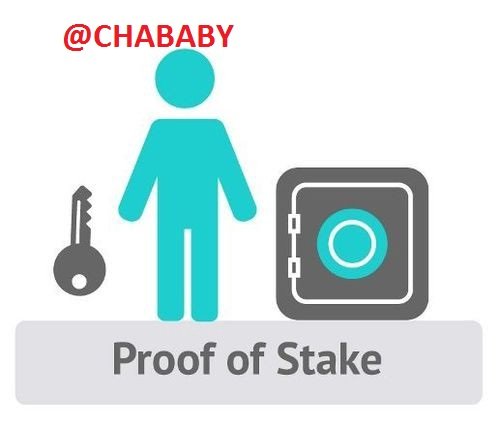Different types of Consensus Mechanisms - Steemit Crypto Academy Season 5 - Homework Post for Task 6 by @chababy
What is the difference between PoW & PoS? Advantages and Disadvantages? Which one is better in scaling capacity?


It has been an amazing journey in the academy and I am writing my task 6 on the consensus mechanism, I hope to deliver according to my understanding. I will be going straight to explaining the questions given
WHAT IS CONSENSUS MECHANISM

from the word consensus, we could tell it is an agreement protocol, because the blockchain is built with a system that is not centralized in nature with no regulating authority like the traditional and centralized networks, The consensus mechanism is used to ensure that the decentralized blockchain remains in it's true state. with the aim to create a governing structure for the blockchain network to solve the problem of security, decentralization, and scalability. Each network comes up with the consensus mechanism that they feel will be more suitable for their network.
There are different types of consensus mechanism
- PoS
- PoW
- DPoS
- PoB
Before we can comfortably differentiate between the PoW and PoS we should be able to understand what the both of them are, so I will be giving a definition of both PoW and PoS


The PoW is a consensus protocol or mechanisms that give rise to members solving mathematical problems or puzzles in order to keep spammers out of spamming their network. it is used greatly to validate transactions and mint new tokens. this is done using hash functions where only one hash is generated by the miners and an attempt to alter the hash will lead to an unrecognized hash.

PoS is an acronym for the word Proof of Stake, the proof of stake is a system in which a person can validate blocks based on the amount of coin they possess. This was formed or created as an algorithm to solve the scalability problem of the PoW blockchain. in this case of the Proof of Stake , the mining power is giving based on the percentage of coins possessed by members. So therefore the more coins you have the more power you have.

I will be tabulating the differences so we can have a better understanding of what we are discussing about.
| PoS(proof of stake) | PoW(Proof of Work) |
|---|---|
| new blocks are determined by how much coin a person possess | determined by the work done by the miners |
| hackers would need to own above 50% of all crypto currency on that network | hackers would need above 50% of mathematical power to add a hack |
| no need for expensive mining equipments | mining equipments are quite expensive |
| reward goes to validators as network fee | reward goes to the first miner to solve the mathematical puzzle on a block |
| Investments goes to buy stake and build a reputation | Investment goes to buy mining equipments |
| less power consumption occurs in validation | consumes more power in mining |
| blocks are added by an algorithm based on the user stake | blocks are added by miners competing to solve a computation |

Advantages and Disadvantages?
- No need for complex mathematical computations
- Does require high energy consumption
- Individual can invest without purchasing heavy equipments
- It improves the security of the blockchain
- It processes transaction faster
- it helps solve scalability problem
- Not readily accessible
- That fact that a person can control the network after owning above 50%
- The reward system is less when compared to miners
- Stakes are not accessible until the period of being locked elapses

- Great security level
- Miners earn high rewards compared to validators
- Gives a perfect decentralized system of transaction verification
- Very easy to comprehend
- One person can't determine the network by having above 50% worth of the asset
- It consumes very high energy
- Encounters scalabilty issues
- Equipment for mining are very expensive
- High transaction cost
- The stress of computation would be a very big issue in future

Which one is better in scaling capacity?
Scalability issues could be seen as the limitation of a network to carry out many transactions at a time probably due to the speed of new block creation or block size. from our definition and comparison above we can detect that the Proof of Stake(PoS) has better scalability than the Proof of Work(PoW) as it can perform more transactions and create faster blocks when compared to the proof of work

Conclusion
Having studied this topic I have been able to learn the different consensus mechanisms and have properly differentiated between the PoS and the PoW giving their advantages and disadvantages of each.
thank you all for reading my post and I am glad to be writing in the academy
Do not use the #club5050 tag unless you have made power-ups in the last month that are equal or greater than any amount you have cashed out.
cc @dilchamo
Noted. I will look into this.